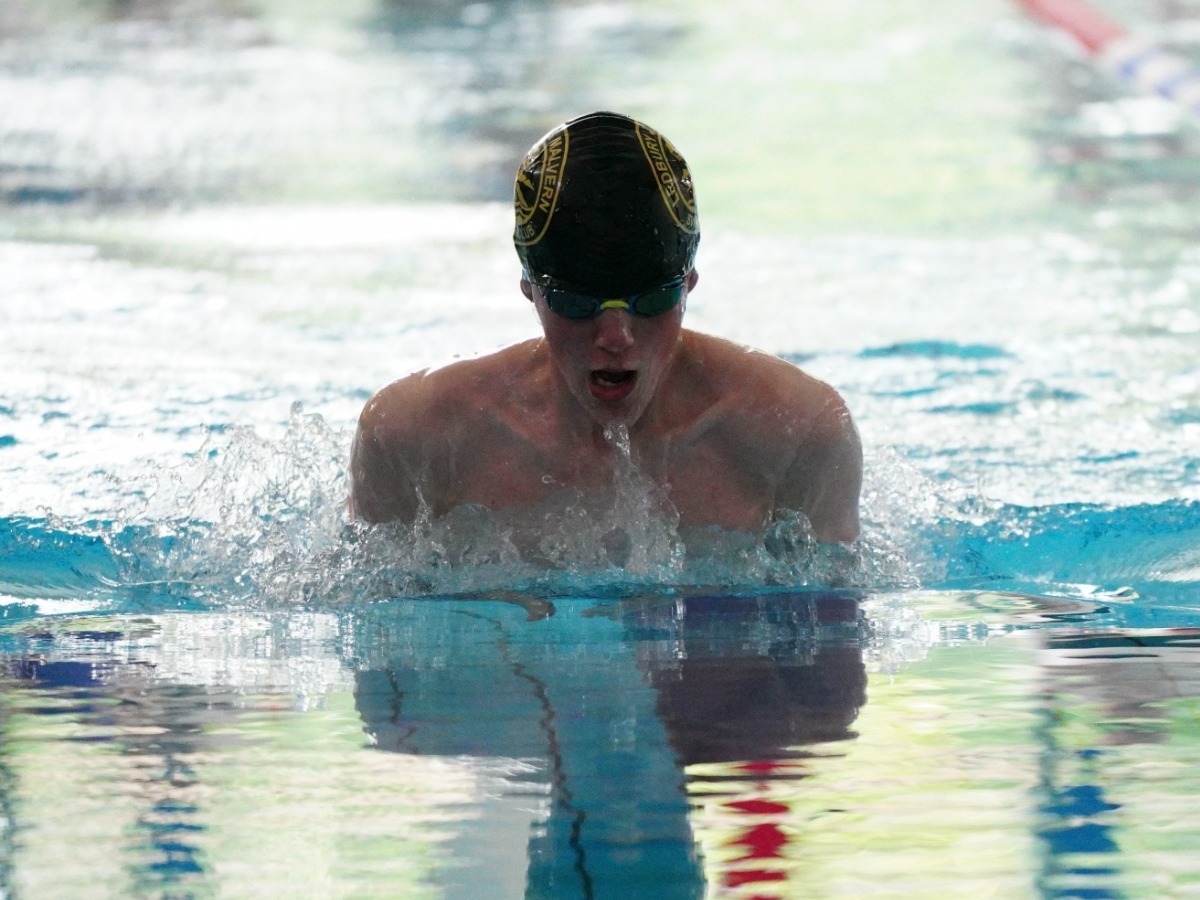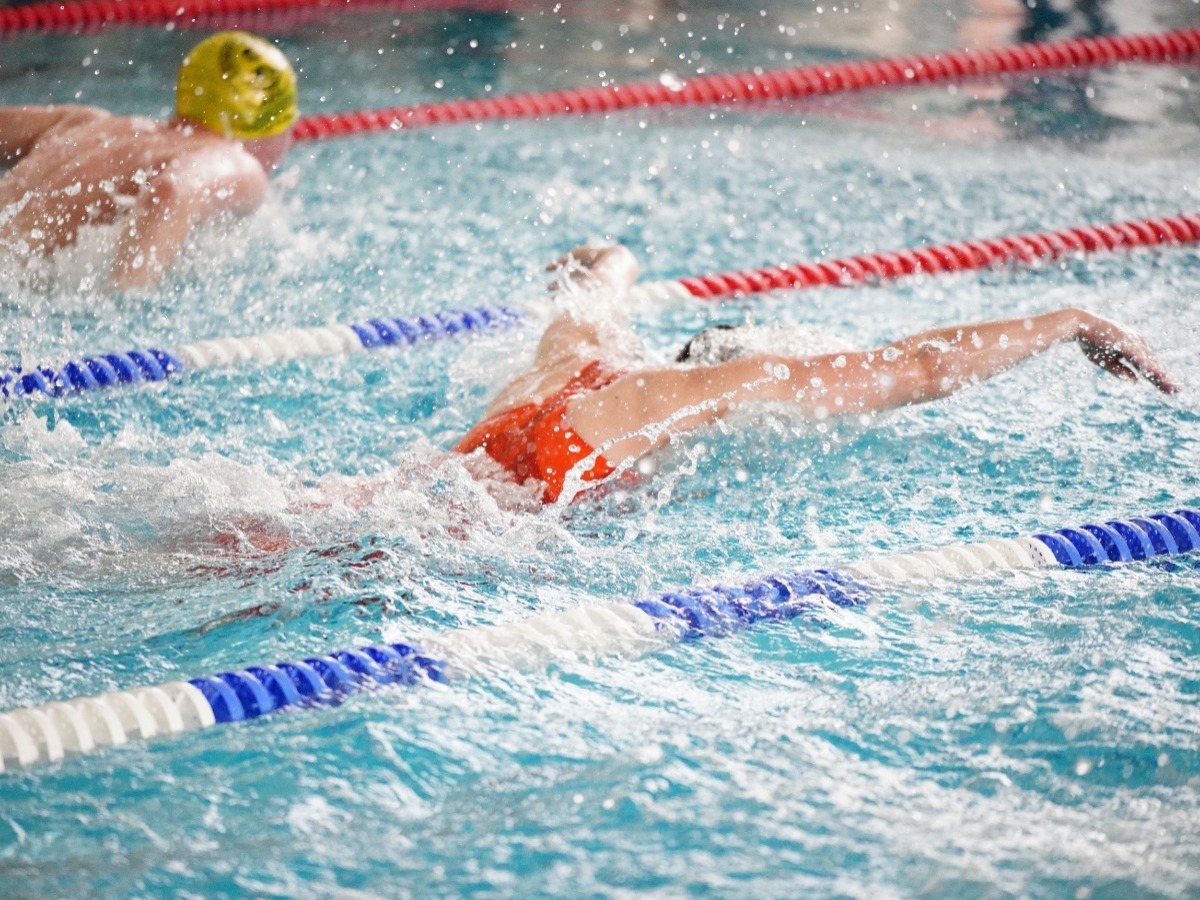
GETTING COMPETITIVE


Club Championships
Younger swimmers first experience of competitive swimming in the club will most likely be in the LMASC Club Galas. Under ASA Rules, swimmers under 9 years of age are only able to compete in internal competitions. Our Club Galas are licenced to Level 4 and take place 5 times a year just for our members. All swimmers are expected to take part.
League and Gala Fixtures
LAMSC competes in several gala leagues, where the club will take part as a team against other swim clubs in the region. There is a varied selection of leagues to give as many swimmers as possible the opportunity to swim competitively for LAMSC. Coaches will choose swimmers to field the best possible team for each gala criteria; not always based on the fastest swimmers for each event! The coaches will do their best to give as much notice as possible and appreciate swimmers to make themselves available when selected. Teams will get promoted and relegated in the league galas, so every point counts. The club organises coach transport for swimmers, officials and some spectators. Swimmers are encouraged to travel together as this helps team spirit and ensures the whole team arrives at the gala on time.
The following link will open the clubs meet calendar for the season. Showing all levels of competition and which squads are eligible for each competition. If you have any questions regarding this please ask your swimmers squad coach or the head coach.
Open Meets
Open meets are competitions where swimmers compete in events as individuals. The club will usually advise on the open meets that are being targeted. The club will inform you in advance. For each open meet, all of the events that your swimmer can enter will be based on their ASA swim times. The club will submit the entries for the events that you decide to swim. You will be notified of the entries that have been accepted or scratched. You will be expected to make your own way to the open meet at the required time, but there will be a supportive team of LAMSC coaches and volunteers at poolside for the duration of the meet.
Open meets are registered swim meets following ASA governing rules. These are hosted by swim clubs across the country. Ledbury & Malvern Swim Club will choose specific target open meets for club swimmers in the region. This means that your child will have the club supporting them by poolside throughout the duration of the swim meet.
Clubs running open meets will issue an entry or meet pack which will have all the entry conditions and qualifying times included. Normally the club will inform you of the events that your swimmer can enter via a Swim Club Manager (SCM) email. Once you have submitted your entries via SCM, the club will submit the entries for the events that you choose to swim, on your behalf.
Open meets are licensed with levels from 4 up to 1, 4 being entry level and 1 the top level. Qualifying times will get faster as the open meet level moves from 4 to 1, usually level 3 and 4 meets require a swimmer entry time slower than the meet qualification time and level 1 and 2 meets require a swimmer entry time faster than the meet qualification time.
Your swimmer’s Personal Best (PB) times for ASA licensed events will be used as their entry time. These can be found listed on the Swimmingresults.org site, individual rankings. Just enter your swimmer’s ASA number or surname to find their PB times. In order for times to be listed on the rankings database, swimmers need to enter licenced meets and get official times recorded.
There are a number of open meets that the club enters, both short and long course. Short course competitions are held in 25m pools and long course in 50m pools. When entering a long course meet, you can normally use converted short course times (and vice versa). Times can be converted using a conversion site such as Pullbuoy.
The club will advise which are target meets suitable for your child. You can enter open meets individually if you like but please chat to the head coaches first to ensure it fits in with the training program.
OTHER USEFUL INFORMATION
Age Groups
Club galas and most open meets have age groups that are used for each event, with an Open Age Group for older swimmers. So swimmers get to swim against others in the same age bracket.
Age at
Depending on the galas and open meets, a different date may be used to determine which particular age group your swimmer will be competing with at the competition. Some are based on ‘Age on the Day’, usually set by the date of the open meet, but league galas that run over several rounds tend to use the date of the final round of the competition. Alternatively some open meets and galas may use the swimmers age as at 31st December of that year instead.
Levels of open meets, galas, and competitions
There are 4 levels of licensed meets. All licensed meets are subject to ASA laws and regulations and the ASA Technical Rules of Racing. They are graded into four levels.
Level 1
Meets are long course (50m) only and cover National, Regional and some open meets. Their purpose is to enable athletes to achieve qualifying times for entry into National, Regional and County Championships. Level 1 meets can only be undertaken in the very best possible competition grade 50m pools.
Level 2
Meets are short course (25m) only and cover National, County Championships and some open meets. Their purpose is to enable athletes to achieve qualifying times for entry into National, Regional and County Championships in short course. Level 2 meets can only be undertaken in an ASA registered and measure swimming pool to ensure precisely correct pool length and conditions of competition.
Level 3
Meets are long and short course events. Their purpose is to enable athletes to achieve times for entry into Regional and County Championships and other Meets at Level 1 or Level 2. As long as automatic timing systems are in place any pool can undertake a level 3 open meet as long as either 25m or 50m length.
Level 4
Meets are entry level events in pools 25m or greater. They are for inexperienced athletes and swimmers seeking to compete inside and outside their club environment. If times are good athletes progress to Level 3 Meets. Any pool can run a level 4 event as long as 25 or 50m, automatic timing does not have to be in place but is preferred for accuracy.
Disqualifications
Unfortunately each swimmer, sooner or later, will come across the concept of disqualification (DQ). Competitive swimming is governed by technical rules in place to make sure that events are run fairly. The same set of rules used by all swim competitions in the country. All officials, such as referees and judges, would prefer not to disqualify swimmers. However the rules have to be adhered to, to prevent an unfair advantage being gained. Being disqualified should be looked on as a learning experience, even experienced swimmers can be disqualified. You can find the technical rules in the ASA Handbook.
Appeal
n the event of a disqualification, all queries related to results or timing should go to the referee only. The referee will only speak to a named representative from the club, usually a coach or team manager, not a parent or friend or another swimmer. It is strongly advised to always refer any concerns to our coaches and poolside team managers on the date of competition and as soon as possible. New ASA and FINA rules dictate that any contesting or disagreement with a result or a swimmer’s time, placing or disqualification has to be submitted within 30 minutes of the race ending. Most of the time the referee will listen to these queries and answer them satisfactorily, however some of these disagreements could be escalated to a Jury of Appeal.
Jury of Appeal
This is a new development within FINA and the ASA and reflects recommendations that are now world-wide. If enough officials and a referee are at a competition and are able to man a jury of appeal, then an appeal can be heard. A referee, wherever possible, will sit within a three-person jury of appeal, alongside other experienced officials, usually a J2 or higher with a junior official knowledgeable about ASA rules. The jury of appeal sit separately to the gala. Ideally, they will not watch or listen to the competition. That way they have no bias and no knowledge of any disagreement. They will not overturn any material facts. The purpose will be to listen to the concerns if the swimmer’s representative believe an ASA rule or regulation relating to the result, place, finish, timing or disqualification has been broken or not enacted in accordance with ASA rules and regulations. An example might be that the swimmer has been disqualified but the lane number reported was incorrect or a disqualification code on the DQ report is not the right code for the reported DQ infringement.
 TBC
TBC